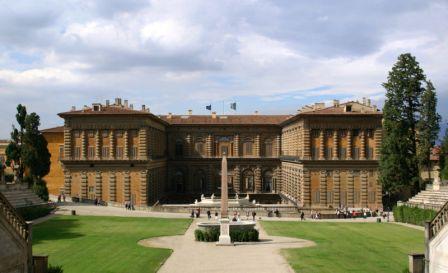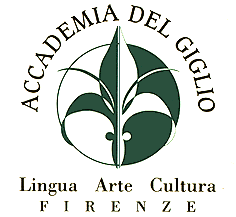 The construction of this marvellous palace was commissioned in 1458 by the Florentine banker Luca Pitti, who wanted to live in a larger and more impressive palace than the one owned by the Medici in Florence. Tradition says that he gave specifical instructions: for example, the windows had to be larger than the entrance of the Medicis residence. Vasari says that Filippo Brunelleschi (1377-1446) was commissioned to design the palace and his pupil Luca Fancelli accomplished the building, which was still unfinished when Luca Pitti died (1472). In 1549 the palace was sold by one of Luca Pitti’s descendant, Buonaccorso Pitti, to Eleanor of Toledo, the grand duke’s wife, so, irony of fate, the palace became the official residence of the Medicis and during the years the building was enlarged: in 1560 the marvellous courtyard with the two lateral wings were added by the architect and sculptor Bartolomeo Ammanati (1511-1592) and the garden was completely rearranged.The rearrangement of the piazza and the refurbishment of the facade were completed under Cosimo II de’ Medici and they acquired the aspect they still have now.
The construction of this marvellous palace was commissioned in 1458 by the Florentine banker Luca Pitti, who wanted to live in a larger and more impressive palace than the one owned by the Medici in Florence. Tradition says that he gave specifical instructions: for example, the windows had to be larger than the entrance of the Medicis residence. Vasari says that Filippo Brunelleschi (1377-1446) was commissioned to design the palace and his pupil Luca Fancelli accomplished the building, which was still unfinished when Luca Pitti died (1472). In 1549 the palace was sold by one of Luca Pitti’s descendant, Buonaccorso Pitti, to Eleanor of Toledo, the grand duke’s wife, so, irony of fate, the palace became the official residence of the Medicis and during the years the building was enlarged: in 1560 the marvellous courtyard with the two lateral wings were added by the architect and sculptor Bartolomeo Ammanati (1511-1592) and the garden was completely rearranged.The rearrangement of the piazza and the refurbishment of the facade were completed under Cosimo II de’ Medici and they acquired the aspect they still have now.
 The frescos and the decoration inside of the Pitti palace were accomplished during the 17th Century by Pietro da Cortona and other artists of those times. The rooms of the palace were shared among the different members of the Medicis family: the Grand Duke used to live in the rooms on the left of the facade and during the summer on the ground floor, those on the right were reserved for the heir and the wings of the building on the first floor were occupied by the wives of the family. The library was situated in the front rooms on the second floor.
The frescos and the decoration inside of the Pitti palace were accomplished during the 17th Century by Pietro da Cortona and other artists of those times. The rooms of the palace were shared among the different members of the Medicis family: the Grand Duke used to live in the rooms on the left of the facade and during the summer on the ground floor, those on the right were reserved for the heir and the wings of the building on the first floor were occupied by the wives of the family. The library was situated in the front rooms on the second floor.
Nowadays on the first floor the palace hosts the Palatine Gallery with its beautiful masterpieces by Raffaello and several Mannerist painters. On the ground floor and on the mezzanine you can visit the Medici treasury (“Museo degli Argenti”) and, on the top floor, the Gallery of Modern Art. In the separate Palazzina del Cavaliere at the top of the hill there is the Porcelain Museum, while in the Palazzina of the Meridiana next to the Pitti Palace it is possible to visit the Costume Gallery.
The Pitti Palace will be visited during our course of History of Art.
Museums in Florence: the Pitti PalaceScrivi un commento |







Commenti recenti